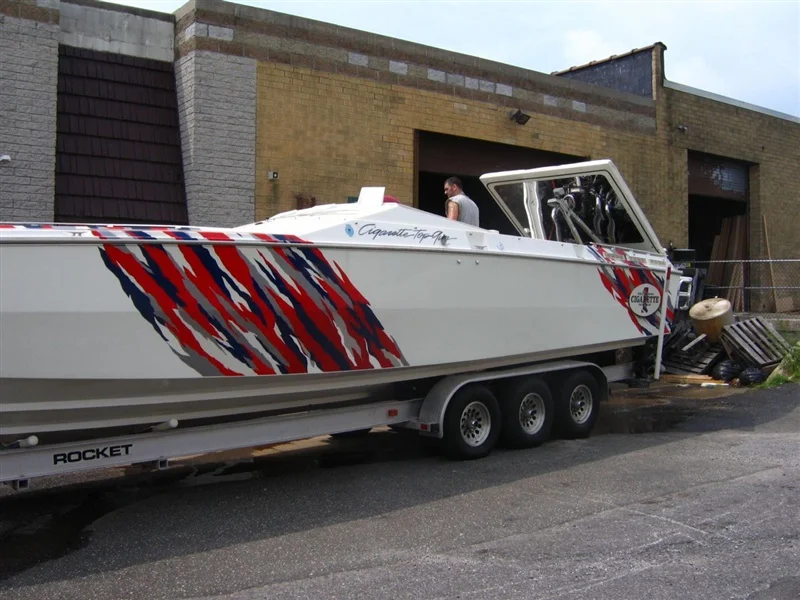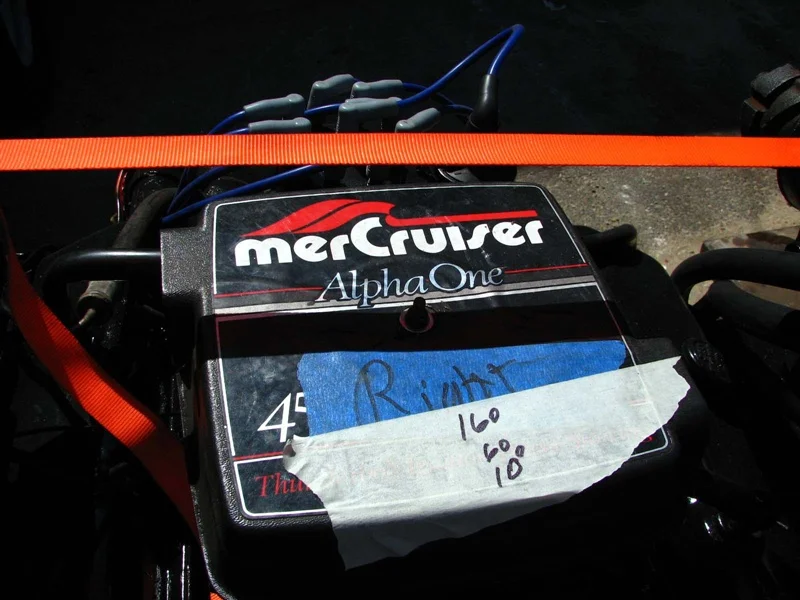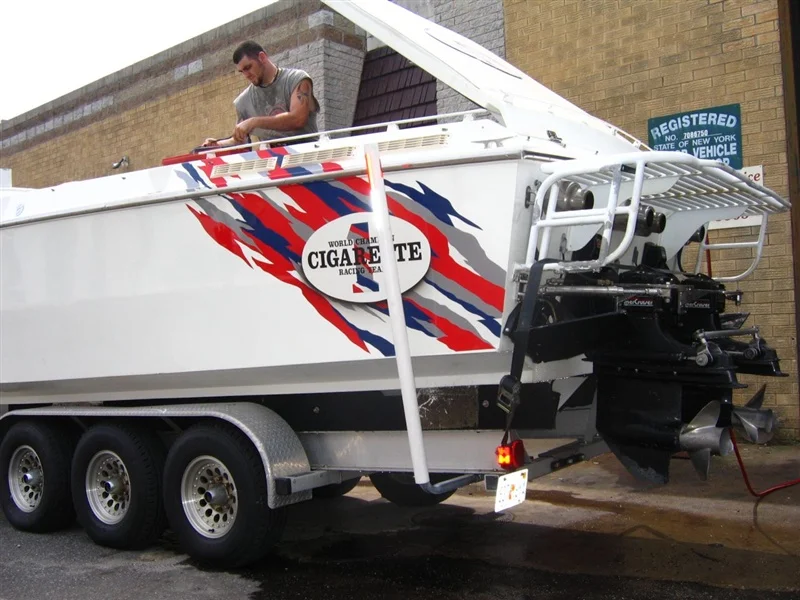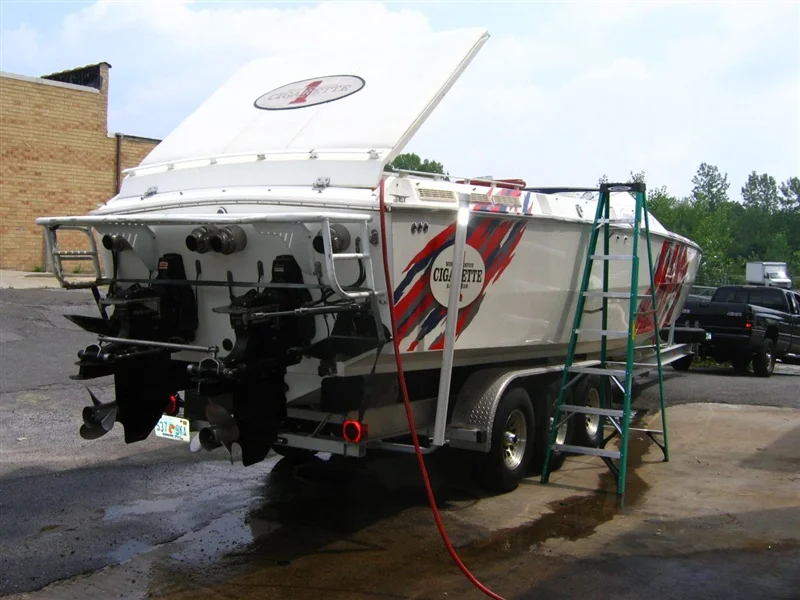10 Tips on How to Best Store Your Boat
Fall and winter boat storage is a crucial part of boat ownership that many boaters overlook until the weather turns colder. Properly preparing your boat for the offseason not only helps protect it from the elements but also ensures it’s ready to hit the water again come spring. From cleaning and engine maintenance to covering and storing electronics, taking the right steps this upcoming fall and winter can extend the lifespan of your vessel and save you from costly repairs later.
As the weather cools and the boating season winds down, it is essential to start preparing your boat for fall and winter storage. Properly storing and maintaining your boat during the offseason can extend its lifespan and ensure it’s ready for smooth sailing come spring. Let’s take a look at 9 tips about storing your boat safely during the colder months.
1) Safety First, Cleanup Second
Before you start cleaning, ensure the area is safe. Check for hazards, such as broken docks or wildlife seeking higher ground. Once all is clear, begin removing debris and drying out any wet areas to prevent corrosion. Even if your boat looks fine, inspect it carefully. Look for leaks, broken hatches, or signs of water in the bilge. Make sure the bilge pump is working and that the fuel systems are intact.
2) Give Boat a Thorough Cleaning
Before storing for the winter, be sure to clean your boat inside and out. Remove any dirt, algae, and salt buildup from the hull. Also, pay attention to areas that are prone to grime, like the propeller, transom, and hull sides. Inside, clear out any food, towels, or equipment that could attract mold or pests. A clean boat is far less likely to have corrosion, mildew, or unpleasant odors when you return.
Many boat owners also consider applying a coat of marine wax to your boat’s exterior after cleaning to help protect it against moisture and oxidation over the winter months.

3) Protect Your Boat’s Engine
Your boat’s engine requires special care before a long storage period. First, flush the engine with fresh water to remove any salt, sand, or contaminants. Afterward, run the engine with a fuel stabilizer added to the gas tank. This prevents fuel from degrading over time, which can clog fuel lines and damage the engine. Lastly, lubricate key components, like the steering and control cables, to prevent corrosion. Protecting your engine now can save you money of unnecessary repairs in the future.
4) Drain Water Systems and Add Antifreeze
Any water left in the plumbing or live well systems can freeze and cause pipes or tanks to crack. Causing significant damage. After draining all water from these systems, consider adding marine-grade antifreeze. This holds especially true for those living in colder climates, like New York, where freezing temperatures are common.
5) Remove and Charge the Battery
Disconnect the battery on your boat and store it in a cool, dry place. Make sure it is fully charged before putting it away to maintain its lifespan. You can check on the battery periodically throughout winter, recharging as necessary to prevent it from completely draining.

6) Inspect & Store Removable Electronics and Gear
It is important to remove any electronics, safety gear, or valuables from your boat in order to prevent potential theft or damage. Items like GPS systems, radios, life jackets, and fishing gear should be stored indoors where they are protected from moisture and temperature extremes.
7) Cover Boat Properly
A quality cover is essential for keeping your boat protected during the offseason. Make sure the cover fits securely and is made from durable, waterproof material to withstand rain, snow, and fluctuating temperatures. If you want additional protection for your boat during the offseason, consider shrink-wrapping. This is especially true if your boat will be stored outdoors, since it provides a tighter seal against moisture.
You may want to avoid using tarps or cheap covers that can tear easily. Investing in a high-quality cover or shrink-wrapping can prevent costly repairs later and keep your boat safe during the offseason months.
8) Keep an Eye on the Humidity
Excess humidity can lead to mold, mildew, and foul odors in your boat’s cabin. To combat this, consider using a moisture absorber or desiccant bags in enclosed spaces. This can make a huge difference, especially in areas with fluctuating temperatures that lead to condensation. Or if you close up your boat early or leave it closed until spring. It can be humid during these months, so be prepared.

9) Damage? Contact Insurance Company
If your boat has been damaged, sunk, or needs to be salvaged, then we recommend contacting your insurance company immediately. They will guide you through the process and advise you on what to do next. Don’t try to salvage it yourself without speaking to them first. Oftentimes, your insurance will often provide a professional crew to handle the job safely.
10) Final Check: Make a Winter Storage Checklist
Before you finish up, run through a checklist to ensure all tasks are complete. Here is an example of a final winter storage checklist.
- Clean exterior and interior thoroughly.
- Flush and stabilize the engine.
- Drain all water systems and add antifreeze.
- Disconnect and charge the battery.
- Securely cover the boat.
- Remove valuables and electronics.
- Place moisture absorbers if needed.
With these steps in mind, your boat will be protected and well-maintained throughout the winter, allowing for a worry-free return to the water next spring. Taking time now to prepare for storage can help prevent damage, save on repair costs, and ensure your boat is ready to go for another season of adventures.
Looking for Winter Storage?
Contact us today to learn more about the winter storage we have available.


